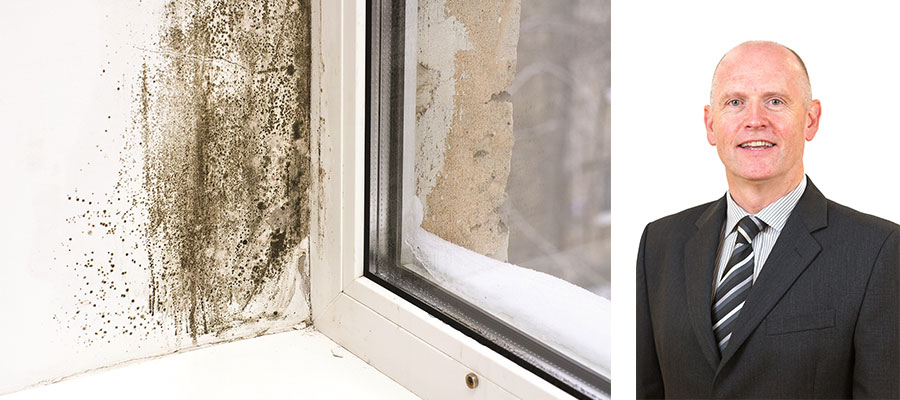John Bradley, Managing Director at Homevent, (Elta Fans residential division), discusses why this winter could see a rise in condensation – providing the perfect breeding ground for mould and reducing indoor air quality.
Just when you think 2020 couldn’t get any worse, we start to enter condensation season. Unfortunately, this year there are a number of new factors at play which could exacerbate issues further. Let’s take a look in more detail.
The annual dilemma of condensation
The UK weather has a lot to answer for and the colder months inevitably make a lot of things in life more challenging. Property maintenance is one such issue. Once the external temperature drops, internal surface temperatures follow. In poorly ventilated homes, vapour laden air can condense on such surfaces like walls and windows. This in turn can lead to a type of mould which can cause serious health issues, as well as having a damaging effect on the building.
For those who work for housing associations, local authorities and other registered housing providers, there are solutions available. However, this is still an area where many misconceptions exist, most likely due to the complexity of air management inside buildings. Unfortunately this can lead to compliance issues, questions over ventilation adequacy in relation to the Homes (Fitness for Human Habitation) Act and, ultimately, ill health of residents and costs for housing providers.
This is evidenced in a report from the Ministry of Housing, Communities and Local Government in September 2019 entitled ‘Ventilation and Indoor Air Quality in New Homes’. The results of the study indicated poor indoor air quality in a number of the monitored homes. Failure to meet indoor air quality indicators, in all cases, corresponded with failure to meet the Approved Document F ventilation recommendations within the UK Building Regulations.
More time at home
Not being able to influence occupant behaviour is one of the most challenging aspects of combatting condensation in a property. We already spend around 90 per cent of our time indoors, and the majority of that figure is now estimated to be spent in our own homes due to the lockdown. With the most recent Government announcement forecasting a six month lockdown period through the winter months, properties need to be well equipped to deal with these increased occupancy levels.
This is an issue compounded when tenants are on low incomes, as they will often be unable to afford high heating bills. In turn, this makes them less likely to open windows, which might otherwise help to naturally ventilate a room and allow moisture to escape. Particularly prevalent in social housing, the link between fuel-poverty and condensation is something that landlords should be aware of, in order to facilitate a pro-active approach to mitigating a lack of natural ventilation.
The emergence of the Green Homes Grant
Another factor to impact the 2020 condensation season is the Green Homes Grant. Upon the surface, offering families £5,000 towards energy-saving measures for their homes is undeniably positive. However the functionality of the Green Homes Grant needs to be scrutinised further to prevent it from causing further issues down the line. Because it places a significant focus on insulation improvements, it could have a damaging knock-on effect for indoor air quality. Unfortunately, it reduces the amount of air that flows in and out of a property, which reduces natural ventilation to the point where it creates an environment conducive to mould growth and increased pollutant levels.
Education is key
2020 certainly won’t be a highlight year for many reasons, but there is still time to prevent the potentially catastrophic effects of a proposed worst condensation season on record. There are many solutions available which perfectly balance creating a healthy environment for tenants, protecting a property, and remaining energy efficient. However, every situation is different and should be assessed independently. For this, education is key. At Homevent, we have developed a free CPD seminar entitled ‘Providing “adequate ventilation” in existing homes’. It will provide thorough guidance on what is “enough” ventilation and the best approach to take to safeguard you, your tenants and your properties.
If this sounds of interest to you and your organisation, please email John Bradley at jbradley@eltafans.co.uk
- Log in to post comments














